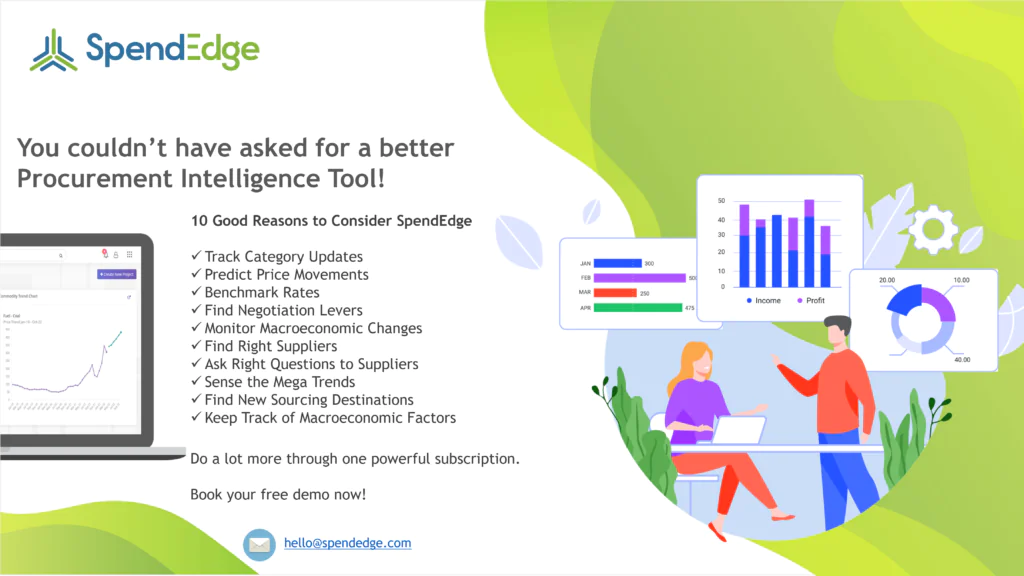By: George Mathew
Best-in-class procurement organizations successfully lead business growth by effectively conducting supplier negotiations. One of the best tools to help with this is should-cost analysis as it throws light on what it really costs to design, manufacture, and deliver a product or service. The insights generated from a properly conducted should-cost exercise helps procurement stakeholders understand the most important cost drivers and get a clear view of expected price points, develop strategies for supplier negotiation, and identify opportunities for improving procurement operations.
With rapid changes in how modern procurement functions operate, it has become necessary to achieve operational excellence and conduct proper cost-benefit analysis to stay competitive. Should-cost analysis enables the procurement function to develop the capability to meet every challenge along the entire product lifecycle. With the help of automation using parametric cost models, should-cost analysis can also be used by large companies which previously found it impractical because of large, diverse product catalogues or compressed production cycles. The latest analytic methodologies help examine thousands of component combinations based on only a few inputs and identify cost opportunities that previously would have taken months to identify, this making should-cost analysis feasible for multiple industries, including those that are already using it.
Benefits of should-cost analysis:
Improve efficiency of the procurement function
A should-cost model helps analyze the underlying cost structure of a product which can help with identifying opportunities to improve efficiency in the purchase, production, delivery, and design of the product. It provides visibility on the material, labor, and machine prices, as well as insights into how each cost component contributes to the overall cost of the product or service.
Make cost savings an integral part of the procurement function
Implementing a should-cost analysis not only helps organizations realize immediate savings in the cost of the products and services they buy, but also enables them to attain ongoing cost savings by combining the should-cost capability with a strong vendor-management approach. Although several challenges may come up along the way when developing a should-cost model for the first time, the benefits it can provide to procurement stakeholders will be long standing.
Develop better control over costs and boost margins
A properly developed should-cost analysis serves as the first step to a cost engineering function. When implemented properly, this function can be used by the procurement and product development teams to control costs, boost margins, and develop the products that customers need.
How SpendEdge can help with should-cost analysis

Maximize profits through reliable and accurate cost analysis
SpendEdge’s seasoned experts can help organizations gain an edge with our comprehensive should-cost models that accurately detail each cost element. With a complete view of the important cost drivers, our analysts help organizations prepare and respond to various risk scenarios quickly and effectively, as the impact of price volatility can be predicted in time.
Effectively negotiate cost with suppliers
While cost is not the only factor that is considered while selecting and negotiating with suppliers, it cannot be denied that it is an important consideration. Through should-cost models developed by SpendEdge’s experts, organizations are better prepared to effectively negotiate costs with suppliers. Our cost models provide visibility on margins charged by suppliers which can serve as a basis for negotiating better pricing terms.
Improve savings by identifying various hidden costs
Through should-cost analysis, SpendEdge’s analysts can help procurement leaders understand what drives the overhead expenditure to identify cost-saving initiatives. In addition, it helps in choosing the solution that provides the maximum benefit by enabling procurement teams to replace high-cost items (products that charge high profit margins) with alternatives that are cost effective.
Success story: How SpendEdge helped a CPG client gain visibility on true cost of its packaging material
SpendEdge’s client is a global CPG company with presence across the F&B, home care and personal care segments. The client’s procurement team responsible for packaging products was interested in knowing the true cost of its primary packaging products. As part of a series of cost models conducted for different packaging products, the client wanted SpendEdge to determine the should-cost for laminated tubes used in its personal care segment. More precisely, the client wanted SpendEdge to undertake a cost engineering exercise wherein changes in input parameters such as location of manufacturing, type of equipment used, dimensions of tube, material of tube, type of cap, etc. would precisely calculate and generate the true cost of manufacturing the laminate tube.
SpendEdge’s analysts evaluated the various cost heads that add to the cost of manufacturing laminate tubes. This included raw materials, equipment and machinery, labor, and other costs. Under each of the broad cost categories, an exhaustive list of different cost components (different raw materials, different machinery, various type of labor and various other costs such as utilities, SG&A, maintenance, margins, etc.) was ascertained and the cost for each component was determined. As a final step, the various cost parameters were fed into a dashboard which the client could use to gain visibility into the true cost of manufacturing various types and sizes of laminate tubes by changing the input parameters based on their interest.
As an outcome to this exercise, the client was able to determine that the price they were currently paying for laminate tubes in the two countries of interest (India and Germany) was in line with current market prices. Nonetheless, the visibility into the margins being charged by their suppliers provided the client with vital insights that could be used while negotiating with suppliers when the existing contract would be due for renewal in six months.
.

Contact us now to solve your procurement problems!
Author’s Details
George Mathew
Associate Vice President, Sourcing and Procurement Intelligence
George is a procurement specialist at Infiniti Research and provides advisory services to clients across the pharmaceutical, CPG & FMCG, energy, and automotive sectors. He specializes in the procurement areas of industry benchmarking, cost modeling, rate card benchmarking, negotiation advisory, and supplier intelligence.




